
Getting engaged signifies taking the next step in your relationship. It’s an important milestone, and one you want to make sure you get right.
It is most-commonly symbolised by asking for your girlfriend’s hand in marriage by giving her an engagement ring. And with so many different options, how do you know how much you should be spending on this ever-important purchase?
Thinking about how much to spend on an engagement ring is one of the most common questions at the forefront of the mind of someone that is about to propose.
The secret to knowing how much to spend lies in striking the optimal balance between your financial reality and the expectations of your partner.
Everyone’s situation will be different and the balance of these two things will naturally be different too.
Nonetheless, there are still a few methodologies that are used for approaching this major purchase decision…

The Two-Months Salary Rule
You may have heard of the two months’ salary rule. No big surprises as to how this works: you are supposed to spend two months of your income on the engagement ring.
For example, if you make $5,000 per month, then you’d spend $10,000 on the ring.
It is nowadays commonly accepted that this is very much an outdated rule that was initiated by the diamond company De Beers and driven by marketers.
People’s earning potential increases at later stages of their careers, and depending on when you get engaged, can result in both over or under-spending on the ring.
There is also a big difference between net versus gross earnings, which can make a massive difference on how much you spend using this rule.
And if you have a big university debt, then spending a large sum on a ring with that debt hanging over your head might feel like an (already tight) noose that’s getting even tighter around your neck.
Alternatively, there’s the social average rule. At first glance, this makes a lot of sense, since you can take the average spend by the “common man” as a basis for comparison.
This may represent a useful benchmark and more realistic framework than the two-months salary rule, but still doesn’t take into account your personal financial situation (which may still result in meeting the social average hard or impossible).

Expectations
It is important to balance your financial situation with your partner’s expectations. It is important to remember that buying an engagement ring is different to buying that pair of running shoes you bought online the other day.
An engagement ring is a symbol of your relationship and the love you have for your girlfriend.
As you look towards the future, the proposal marks the beginning of the rest of your lives together and the ring is symbolic of that milestone.
It is likely that your partner will have thought about this special day at some point throughout your relationship.
As many women have a natural fascination with jewellery, she may likely have given some thought to her ideal engagement ring, which means she probably has an idea about some basic things like its style and the diamond shape, size and colour.
Your financial reality means that you should not spend beyond your means, but spending adequately on an engagement ring can demonstrate that you see the life ahead with your special lady as one of your highest priorities.

Clever Cost-Saving Strategies
Regardless of budget, there are always things you’re able to do to maximise your bang-for-buck.
Certain diamond attributes are visible to the naked eye, whereas others are not.
Naturally, the size and carat weight of the diamond will show obvious differences if bigger or smaller. Similarly, the cut will show greater or lesser sparkle depending on the cut-grade that you choose.
However selecting diamonds with inclusions that are observable only under a microscope might represent a good compromise if need be. Many diamond colours are also very difficult to distinguish by the naked eye, and small differences can often represent big savings.
Make sure that you also get multiple quotes as different jewellers have different stock they are often trying to clear with different levels of urgency. If time is on your side and you’ve done your homework with different jewellers, there’s a high likelihood you’ll come across a diamond priced below what it may likely be selling for with other jewellers.
Similarly, try to avoid typical store-front jewellers as their retail overheads often add a layer of additional expense that inevitably gets passed on to you as the customer.

A Beginner’s Guide to Understanding the 4C’s
The 4C’s are the globally-accepted standard for describing the quality of diamonds.
They refer to a diamond’s…
Being familiar with the 4C’s enables you to talk about a diamond’s quality in a ‘universal language’, and helps you understand exactly what type of diamond you are about to purchase.

Colour
Many people confuse the colour grade of a diamond with the category of diamonds that are referred to as fancy coloured diamonds—diamonds that are naturally-coloured.
This is not what we are referring to when we talk about ‘Colour’ in the 4C’s.
When talking about Colour in the context of the 4C’s, we are actually talking about a diamond’s lack of colour. The less colour, the better the diamond.
Diamond colours are sorted into five different grades:
Colourless
DEF
The best diamonds are those that are colourless. These have a grading of ‘D’, ‘E’ or ‘F’. They are significantly more expensive. The differences between these three grades is very small, and all three grades are considered to be a high-grade colour. These diamonds look excellent when paired with white gold or platinum ring metals.
Near Colourless
GHIJ
The next best, are diamonds that are near colourless. These have a grading of ‘G’, ‘H’, ‘I’ or ‘J’. Near colourless diamonds are more common than colourless diamonds, and are therefore less expensive. These diamonds have either a very slight warmth to their tone, a faint yellow hue, a slight yellow tint or a light yellow tone. All of these features are difficult to detect by the naked eye and can typically only be seen when compared side-by-side with diamonds of a higher colour grade.
Faint Colour
KLM
Following on, are faint colour diamonds. These have a grading of ‘K’, ‘L’ or ‘M’. These diamonds are a good option if you desire a larger diamond, but are limited by budget. Their faint colour is often hard to differentiate from lower-grade, near colourless diamonds.
Light Colour
NOPQR
After this, are light colour diamonds. These have a grading of ‘N’, ‘O’, ‘P’, ‘Q’ or ‘R’. These diamonds have a slight colour that can be seen by the naked eye. They are much cheaper than higher-grade diamond colours, and are usually deemed undesirable because of their inferior qualities.
Very Light Colour
STUVWXYZ
Finally, there are very light colour diamonds. These have a grading of ‘S’, ‘T’, ‘U’, ‘V’, ‘W’, ‘X’, ‘Y’ or ‘Z’. These diamonds have a warm tint that is visible to the naked eye. They are generally deemed undesirable for making jewellery and are rarely used when making diamond engagement rings.

Clarity
Diamond Clarity refers to the absence of blemishes and inclusions.
Flaws on the surface of the diamond are referred to as blemishes. Flaws within the stone are referred to as inclusions.
Since diamonds are natural creations—created over millions of years—inclusions and blemishes are inevitable. Nonetheless, diamonds with the fewest inclusions or blemishes receive the highest clarity grade, and have a higher value.
There are different types of diamond inclusions and blemishes. Examples of diamond inclusions are clouds, feathers, knots and internal graining. Examples of diamond blemishes are polish lines, scratches, nicks and breaks.
There are five factors when it comes to determining a diamond’s clarity:
- Size: The larger or more noticeable the flaw, the lower the clarity grade
- Number: The fewer flaws, the higher the clarity grade
- Position: The location of flaws has the potential to turn inclusions into reflectors, which will lower the clarity grade
- Nature: The type of inclusion and its impact on the diamond’s durability will influence the clarity grade
- Relief: The contrast between the flaw and its surrounding area will influence how easily the inclusion is able to be seen, and will impact the clarity grade
There are six different diamond clarity grades on the GIA scale:
Flawless
FL
These are diamonds with no blemishes or inclusions that are visible under a 10x magnification. They are incredibly rare and represent less than 1% of all diamonds.
Internally Flawless
IF
These are diamonds with no inclusions within the stone that are visible under a 10x magnification. They have small surface blemishes that are visible under a microscope, but still remain eye clean.
Very, Very Slightly Included
VVS1VVS2
These are diamonds with no inclusions within the stone that are visible under a 10x magnification. They have small surface blemishes that are visible under a microscope, but still remain eye-clean.
Very Slightly Included
VS1VS2
These are diamonds with no inclusions within the stone that are visible under a 10x magnification. They have small surface blemishes that are visible under a microscope, but still remain eye clean.
Slightly Included
SI1SI2
These are diamonds with minor inclusions that range from difficult through to somewhat easy to see at 10x magnification.
Included
I1I2I3
These are diamonds with inclusions that are noticeable under a 10x magnification. They are not always eye clean.
Usually, a diamond’s beauty is not affected by any inclusions since most inclusions can only be seen under a magnifying glass. This makes diamond clarity less important than a diamond’s colour or cut.
For this reason, Slightly Included (SI) and Very Slightly Included (VS) graded diamonds often provide the greatest bang-for-buck since any inclusions are almost impossible to be seen without magnification.
Clarity becomes more important for diamonds with a larger carat weight, and with some fancy-shaped diamonds that accentuate flaws.

Cut
It’s a common misconception that when talking about a diamond’s cut, we’re talking about its shape (e.g. round, heart, pear, etc).
Cut actually refers to how well a diamond’s facets interact with light to create sparkle and brilliance.
Of all the 4C’s, a diamond’s cut is the most complex and has the greatest impact on its…
- Brightness:The amount of internal and external white light that is reflected from the diamond
- Fire:The scattering of white light into a broad range of colours
- Scintillation:The amount of sparkle a diamond produces and pattern of light vs. dark areas resulting from reflections within the diamond
A well-cut diamond also reflects the design and craftsmanship that went into producing the diamond. It includes features such as the diamond’s weight-to-diameter ratio, girdle thickness, symmetry of its facet arrangement and quality of polish on all its facets.
In simple terms, the cut grade of a diamond refers to its light performance, meaning the degree to which the diamond retains and reflects the light that enters it. A diamond with a good cut will be highly reflective and exhibit the best possible amount of sparkle. Conversely, diamonds that ‘leak’ light through the bottom or side are usually cut too shallow or deep, and will thus have a less favorable cut grade.
Hence, it is the cut of a diamond that affects the way that light travels through the gem, how much is reflected in the eye, and how much leaks out the back.
A well-cut diamond gives off more bright sparkle and shine, and is therefore more highly valued. A diamond that is cut poorly or too thin will have a lot of light leakage, eliminating its potential for sparkle, and diminishing its value. It takes great skill and craftsmanship to transform a diamond in the rough into a dazzling gem.
The Gemological Institute of America (GIA) have created an objective rating system that is widely-accepted as the gold-standard for evaluating a diamond’s cut.
GIA breaks a diamond’s cut down into five categories, and grades a diamond based on the amount of light it is able to refract back out of its table:
Excellent
The best possible rating is Excellent, and this signifies the diamond is refracting the highest potential amount of light, thus creating an exceptional shimmer when viewed.
Very Good
Next, there is a Very Good cut, which is not an optimal cut, however, it is well-above average and provides a great combination of light refraction and value.
Good
Following closely behind is the Good cut, which produces an adequate amount of brilliance; however, it shimmers noticeably less than the excellent and very good cuts.
Fair
Next, the Fair cut provides an acceptable amount of shimmer but is significantly less shiny than the aforementioned cuts.
Poor
Last is the Poor cut, which produces a base level of shimmer and should be taken out of consideration if at all possible.

Carat Weight
The term carat is also often misunderstood. It refers to how much a gemstone weighs—not its size. Thus, diamond carat refers to the weight of the diamond stone (or its apparent size).
Carat is the standard measurement metric for gemstones and precious stones, particularly diamonds. A metric ‘carat’ is defined as 200 milligrams, with each milligram sub-divided into 100 ‘points’. This allows precise measurements to the 100th decimal place.
In industry lingo, jewellers and gemmologists may refer to gemstones by the points of their carat weight. For instance a 0.5 carat gemstone may be referred to by a jeweller as a “fifty pointer”.
All other diamond attributes being equal, a diamond’s price will increase with increased carat weight since larger diamonds are harder to come by. Make sure to pay particular attention to the diamond’s cut, since a high carat weight diamond that is poorly cut may look smaller in comparison to a smaller carat weight diamond that is better-cut.
Some diamonds are considered “magic sizes”. Half carat, three-quarter carat and single carat diamonds are such examples. To maximise value of your diamond purchase, consider purchasing a diamond ever-slightly below these magic sizes. The outcome will be visually negligible to the naked eye, but potentially save you big on its cost.
Some settings can also make a diamond appear bigger than they actually are. Halo settings, for example, create a ring of small diamonds around the centrepiece diamond, giving the appearance that the main diamond is larger than it actually is.
Finally, fancy-shaped diamonds may appear larger than their actual carat weight. Shapes like pear diamonds may be worth considering when trying to get the greatest bang-for-your-buck when it comes to carat weight.
Learn more with our other articles…

10 Things to Think About Before Buying an Engagement Ring
Proposing to your girlfriend is an exciting milestone, for both you and them.
It represents the end of one chapter of your lives—but more importantly—the beginning of the next.
For most couples, the act of getting engaged is symbolised with the giving of an engagement ring from the man to his wife-to-be.
Some men choose to surprise, whereas some couples decide on a ring together. Either way, it’s a big purchase, and an important one at that!
Here are 10 things to think about before buying an engagement ring…

Learn about the ‘4C’s’
The 4C’s are the globally-accepted standard for describing the quality of diamonds. They refer to a diamond’s colour, clarity, cut and carat weight. Being familiar with the 4C’s enables you to talk about a diamond’s quality in a ‘universal language’, and helps you understand exactly what type of diamond you’re about to purchase.

Focus on the Things You Can See
Of all of the 4C’s, the diamond’s carat weight and cut are the most observable attributes to the naked eye: the carat weight influences the diamond’s perceived size, and the cut influences how much sparkle and brilliance the diamond has. Whilst colour and clarity are still important, you can often get away with imperfections that may only be visible under a microscope.

Future-Proof Your Purchase with a Diamond Certificate
When you buy a diamond with a certificate, you’re buying the assurance of knowing exactly what diamond you’re going to get. A GIA certificate is the ‘gold-standard’ of diamond certification. With this certificate, you’ll know your diamond’s measurements, colour, clarity and cut grade; as well as its weight, finish, polish, symmetry, fluorescence and proportions. Knowing these things will help you benchmark its value, and ensure you don’t get ripped off at purchase.

Think About the Wedding Band too
Looking towards the future, many women also wear a wedding band that is given to them on the day of the wedding. This is often forgotten about entirely when purchasing the engagement ring first. Not all engagement rings and wedding bands fit neatly together like the jigsaw puzzle that they should. This can result in avoidable frustrations and additional costs. Make sure that your engagement ring is compatible with any wedding band you may be planning on giving her in the future.

Know Your Budget and Think About Her Wishes
Asking how much you should spend on an engagement ring is like asking how long is a piece of string. The best advice is to find the sweet spot between her expectations and your financial circumstances. Once you know your budget and have thought about her wishes, you’ll be in a much better place for deciding on the right ring for you, for her and for current realities.

Shop Around to Buy With Confidence
The last thing you want is to rush into one of the largest purchases of your life only to realise that you’ve overpaid… once it’s too late! Start the process early to get a feel for the bang-for-buck you can expect when buying an engagement ring. If you receive a “good quote”, make sure that you verify that it is, in fact, a good quote. Working with reputable companies that offer a price-match guarantee is a good start.

Purchase from Someone you Trust
Buying an engagement ring is a very overwhelming experience for most people. After all, think about how much more a jeweller knows about this stuff than customers learning about it for the first time! It’s important to feel comfortable with whomever you decide to purchase with. There should be a relationship of trust, and certainty that they will deliver the best ring at the best price.

Don’t Buy from Common Retailers
Many ‘street-level’ retailers often have large overheads in running their shops. Big marketing budgets and high rent charges mean that these additional costs inevitably get passed on to you as the customer. When you avoid common retailers, you eliminate paying for a big chunk of these expenses, with those savings being passed on to you in the ring that you do decide to purchase.

Improvise Smaller Budgets With Clever Tricks
There are little ‘tricks of the trade’ you’re able to use to overcome budget limitations. For example, if you need to settle for a smaller diamond than you would like, you may choose to go for a halo setting that helps give the appearance that the diamond is bigger than it actually is. Similarly, choosing certain shaped diamonds—like emeralds—can also create optical illusions that make a diamond appear larger than they actually are too.

Give Yourself Time
There are a good few weeks between deciding on a ring and that ring ending up in your hot little hands. Add a few more weeks if you’re doing extra research and shopping around too. If you’re working towards a specific date for the proposal, you’ll want to give yourself as much time as possible to have ticked all the boxes without missing your timelines and adding additional stress.
Learn more with our other articles…
The 4C’s
Tips for Picking a Ring She’ll Love
You’ve been dating for years and you’ve finally decided to bite the bullet and ask her to marry you.
You are filled with a combination of nervousness and excitement.
You begin making a shopping list of things you need to do for the proposal.
What sits at the top of that list? The ring!
But where to begin?
What does she like? What will she like? What kind of style? How big? How small? What colours?
All these questions… and you haven’t even started thinking about the other parts of the proposal!
Never fear. There are quick and simple ways of smartly answering all of these questions.
Below we overview five tips and tricks for unearthing information that’ll help you pick her perfect engagement ring.

Her Style
Everyone has their own style. You do, your grandparents do. And so does your girlfriend.
But chances are, you’ve never paid too much attention to just what that style may be. After all, why would you?
Well now you have a reason to – you’re trying to get a feel for any patterns in her fashion, styles and preferences.
For example, does she have a preference for the simple things, or does she prefer the ornate?
How swept up is she by current trends versus marching to her own beat and creating her own brand and style?
Is she heavily influenced by pop culture and whatever is trending right now, or does she have a strong sense of self assurance around her likes and dislikes that trump all current social trends?
Would she consider herself hip and modern, or traditional and old-fashioned? Maybe she’s somewhere in between these two?
What kind of lifestyle does she lead – is it active or passive?
And how sentimental and connected to family is she?
Having some sort of idea about these questions will help you understand what kind of ring style you should have on your radar throughout your engagement ring search.

Social Media
Social media platforms like Facebook, Instagram and Pinterest have spent the better part of the last decade collecting a wealth of information about us.
This often comes at our own detriment, however in this instance, it may prove to be a source of intel you’re able to use to understand personal preferences that shed light on the type of ring she’d most appreciate.
It may be as explicit as a Pinterest board of ring and jewellery, or as subtle as a brand she follows on Instagram.
You probably follow each other on social media already, so when she’s not around, take a look at her account and see what insights you’re able to glean from her social media interests and activity.

Friends + Family
You may be her lover, her man who can change the tire, and her rock that brings home the bacon; but there’s a high likelihood you’re not at the top of the list when it comes to those who know about her jewellery preferences.
Don’t feel bad. This isn’t personal.
Chances are she talks fashion or jewellery with her friends on a regular basis. She may also likely have discussed engagement rings with them too – especially if many of her friends have recently got engaged.
In doing so, she will likely have voiced her opinions and thoughts, which will prove to be a goldmine in understanding what’s on her mind when it comes her turn to receiving a ring.
If you trust that her friends can keep a secret and you feel comfortable in bringing them into the process, then politely request their advice and see what suggestions they’re able to provide.
You’re also able to take that one step further and run a few options past them once you have a shortlist of styles and options.
Whatever you do, make sure that you’re comfortable with bringing them into the ‘inner circle of trust’, and that they’re able to keep a secret in the interests of putting a smile on their friend’s dial shortly after.

Other Jewellery
Your lady probably has a jewellery box stashed somewhere in the bedroom. This is her collective repository of necklaces, earnings and other pieces of jewellery she’s acquired over the years.
What better way to get a feel for her style and preferences than taking a look at her existing favourite pieces of jewellery.
Does she own white gold, yellow gold or rose gold jewellery? Is she big on simplicity, or more a fan of the extravagant?
Whilst you won’t find an engagement ring there (well, we hope not for you!), you will likely find other pieces of jewellery that can serve as inspiration for how to begin the process of selecting the perfect engagement ring.
Like a good thief, make sure you don’t leave any trace of your mischievous activity. And do this at a time she’s not home and likely to walk in on you in the act.
To avoid needing to do this over and over again, it may be useful simply to take a couple of photos of her jewellery. This will make sharing and consulting with jewellers, friends and family a whole lot easier too.

Shopping
Unless you’ve made the conscious decision to buy the ring together, you’re going to want to keep it a surprise. This makes going out and shopping for a ring together near impossible.
However, there are a few little sneaky things you’re able to do whilst out and about in the shopping mall.
You can “admit” that you’re looking at other jewellery pieces for her upcoming birthday. Or you can be a busy-body seeing what your co-worker just paid for his recent ring.
The secret here is subtly. Make sure you don’t come across too invested in the shared shopping experience and let her lead the charge on sharing information (if she does so at all).
Diamond Shapes
There are many technical elements to finding the perfect diamond engagement ring. When thinking about the 4C’s, you have the cut, colour, clarity and carat weight to think about. But chances are, even before you turned your attention to all of these vital diamond components, you probably had an idea of what your diamond ring was going to look like, and this would likely have been principally influenced by the diamond’s shape.
A diamond’s shape describes the diamond’s basic outline when viewed face-up. For example, if it is round, square or oval. This is different from the diamond’s cut, which is something completely different, as the cut refers specifically to how the diamond’s facets are arranged.
Below we’ll run through your various shape options and key things to keep in mind when deciding on what shape is right for you…
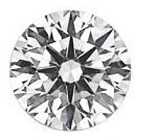
Round
Round shaped diamonds are the most popular shape and are frequently used for Solitaire-set engagement rings. Almost all round diamonds are brilliant cut since the angles created with a brilliant cut helps to enhance its fire and brilliance.

Princess
Princess shaped diamonds are a very bright and acute style, with uncut corners. Generally, it is a square or rectangular cut. The brilliant style is because of the vertical directions in the crown and facets in the pavilion instead of horizontal cuts. This diamond shape is one of the most wanted for engagement rings, and most often, princess cut engagement rings аrе accented with other smaller stones with the diamond at its centre.
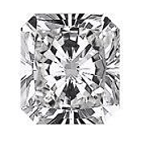
Radiant
With its square shape and trimmed corners, the radiant cut diamond is a very versatile diamond that combines the emerald shape with the brilliance nearly matching a round cut diamond. It is quite similar to the princess cut but is usually slightly more in the shape of a rectangle, and it has its corners blocked.

Emerald
The emerald cut diamond provides for deep clarity and a large surface table. They are a popular choice for those wanting a larger stone without a high price point, and can give the appearance that they are bigger than they may actually be. Despite being rarer than round or princess shaped diamonds, they are often slightly cheaper, making them an attractive option.
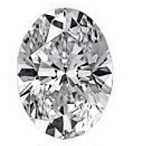
Oval
Oval shaped diamonds are becoming increasingly popular. They enhance the diamond’s fire and brilliance and make the wearer’s finger appear longer and slimmer. Because of their greater surface area, they often appear larger than a round diamond of the same weight. Its rounded edges also make them less prone to chipping.
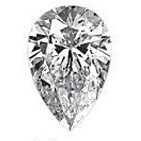
Pear
Pear shaped diamonds fuse the best of both the marquise and round shapes. Similarly to marquise shaped diamonds, symmetry is key. Pear shaped diamonds resemble a teardrop, and when worn with the pointy end pointing out towards the tips of the finger, create a slimming effect on the hand.

Heart
The heart shaped diamond is naturally often chosen as an expression of one’s love for another. They should have two symmetrical halves that meet at a distinct cleft. Inclusions are often more prominent in this shape, so keep your eye out for good clarity.
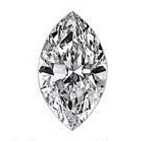
Marquise
Marquise shaped diamonds have become popular since they tend to make the diamond appear bigger in size than it actually is. If opting for a marquise shaped diamond, ensure that it is symmetrical, as even small asymmetries can give the appearance that it is unbalanced and uneven.
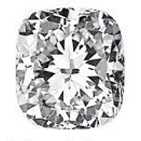
Cushion
The cushion cut diamond is popular with those who desire an antique style engagement ring. They are known for being both classic and contemporary. Cushion cut retains more colour face up than a brilliant cut, which makes them a good choice for coloured diamonds. Cushion cut diamonds have curved sides and rounded corners.
Engagement Ring Settings
When we think of an engagement ring, we often think that what differentiates one ring from another is largely dependent on the diamond that sits atop of that ring.
And whilst the diamond is the centrepiece that makes the ring special in the first place, the ring setting it sits upon is absolutely critical too.
Engagement ring settings vary greatly, and reflect the different personalities of different owners.
The setting is also responsible for accentuating or downplaying certain attributes of the centrepiece diamond and creating visual effects that have the potential to bring out the best (and worse) of the gemstone.
Different people also live different lifestyles, making some settings more or less appropriate than others, throwing a ‘practical considerations’ element into the mix.
And finally, different settings cater towards different budget objectives, which may also influence a shortlist of settings that may be more or less appropriate for you too.
Below we overview five of the most popular ring settings you may wish to consider and outline the reasons many people gravitate towards each …
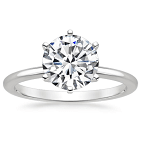
Solitaire
The solitaire setting has come to be the most popular engagement ring setting for a whole lot of reasons. Don’t be fooled by its subtle and unassuming nature – it is bold, striking and elegant. Solitaire settings shine a spotlight on your diamond without any distraction. If choosing a solitaire setting, prioritise the diamond’s cut, as your diamond’s sparkle, brilliance and fire will be most noticeable.
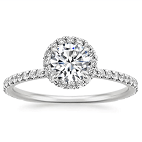
Halo
Halo settings also do a great job on drawing attention to your centrepiece diamond. They are a good option for when working with a smaller diamond and looking for clever ways to make your centrepiece diamond appear bigger than it actually is. This becomes possible by encircling the diamond with a number of pave diamonds, that creates a strong and large diamond presence at the top of the ring. And just like the solitaire setting, cut is critical in halo rings too.
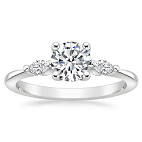
Three-Stone
The three-stone setting typically places your centrepiece diamond in the middle of the ring, flanked by two smaller stones on both sides. Each stone is said to represent the yesterday, today and tomorrow of your relationship. Round brilliant cut and princess cuts are the most popular diamond shapes for this setting. The three-stone setting is popular as it maximises sparkle and brilliance and has the ability to enhance the appearance of the centrepiece diamond too.
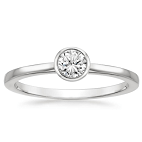
Bezel
Bezel settings have gained popularity for their modern look and suitability for active lifestyles. Bezel settings encircle the centrepiece diamond with a thin metal rim instead of holding the diamond with prongs. This keeps the diamond tightly and durably in place and ensures the diamond remains as protected as possible. Depending on your preferences, you can leave the sides open or closed with a full or partial bezel.
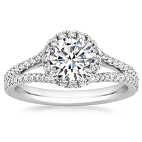
Split-Shank
These settings split the shank of the ring (the band that actually encircles your finger) into two separate shanks. Because of their uniqueness, they command a lot of attention and stand out from traditional single-shank bands. They draw attention to the centrepiece diamond, thus making it more noticeable. They are also great for adding additional side stones that create extra sparkle.
Diamond Carat Weight
The term carat is also often misunderstood. It refers to how much a gemstone weighs – not it’s size. Thus, diamond carat refers to the weight of the diamond stone (or its apparent size).
Carat is the standard measurement metric for gemstones and precious stones, particularly diamonds. A metric ‘carat’ is defined as 200 milligrams with each milligram sub-divided into 100 ‘points’. This allows precise measurements to the 100th decimal place.
In industry lingo, jewellers and gemmologist may refer to gemstones by the points of their carat weight. For instance a 0.5 carat gemstone may be referred to by a jeweller as a “fifty pointer”.
All other diamond attributes being equal, a diamond’s price will increase with increased carat weight since larger diamonds are harder to come by. Make sure to pay particular attention to the diamond’s cut, since a high carat weight diamond that is poorly cut may look smaller in comparison to a smaller carat weight diamond that is better cut.
Some diamonds are considered magic sizes. Half carat, three-quarter carat and single carat diamonds are such examples. To maximise value of your diamond purchase, consider purchasing a diamond ever-slightly below these magic sizes. The outcome will be visually negligible to the naked eye, but potentially save you big on cost.
Some settings can also make a diamond appear bigger than they actually are. Halo settings, for example, creates a ring of small diamonds around the centrepiece diamond, giving the appearance that the main diamond is larger than it actually is.
Finally, fancy shaped diamonds may appear larger than their actual carat weight. Shapes like oval, pear or heart diamonds may be worth considering when trying to get the greatest bang-for-your-buck when it comes to carat weight.
Origin of the Carat System
In order to understand what a diamond carat measures, it is important to know the origin of the modern day carat system.
The cart weight system started with carob seeds, when early gem traders used the small, uniform seeds, which functioned as counter weights in their balance scales. Today, the carat weighs the same milligram weight all around the world.
Diamond Cut
It is a common misconception that when talking about a diamond’s cut, we’re talking about its shape (eg. round, heart, pear, etc). Cut actually refers to how well a diamond’s facets interact with light to create sparkle and brilliance.
Of all the 4C’s, a diamond’s cut is the most complex and has the greatest impact on its …
- Brightness: The amount of internal and external white light that is reflected from the diamond
- Fire: The scattering of white light into a broad range of colours
- Scintillation: The amount of sparkle a diamond produces and pattern of light vs. dark areas resulting from reflections within the diamond
A well-cut diamond also reflects the design and craftsmanship that went into producing the diamond. It includes features such as the diamond’s weight to diameter ratio, girdle thickness, symmetry of its facet arrangement and quality of polish on all its facets.
In simple terms, the cut grade of a diamond refers to its light performance, meaning the degree to which the diamond retains and reflects the light that enters it. A diamond with a good cut will be highly reflective and exhibit the best possible amount of sparkle. Conversely, diamonds that ‘leak’ light through the bottom or side are usually cut too shallow or deep, and will thus have a less favorable cut grade.
Hence, it is the cut of a diamond that affects the way light travels through the gem, how much is reflected in the eye and how much leaks out the back.
A well-cut diamond gives off more bright sparkle and shine, therefore being more highly valued. A poor cut diamond or a diamond that is too thin will have a lot of light leakage, eliminating its potential for sparkle, and diminishing its value. It takes great skill and craftsmanship to transform a diamond in the rough into a dazzling gem. This is why diamond ring cuts are so important.
The Gemological Institute of America (GIA) have created an objective rating system that is widely-accepted as the standard for evaluating a diamond’s cut (in addition to the other qualities of the 4C’s).
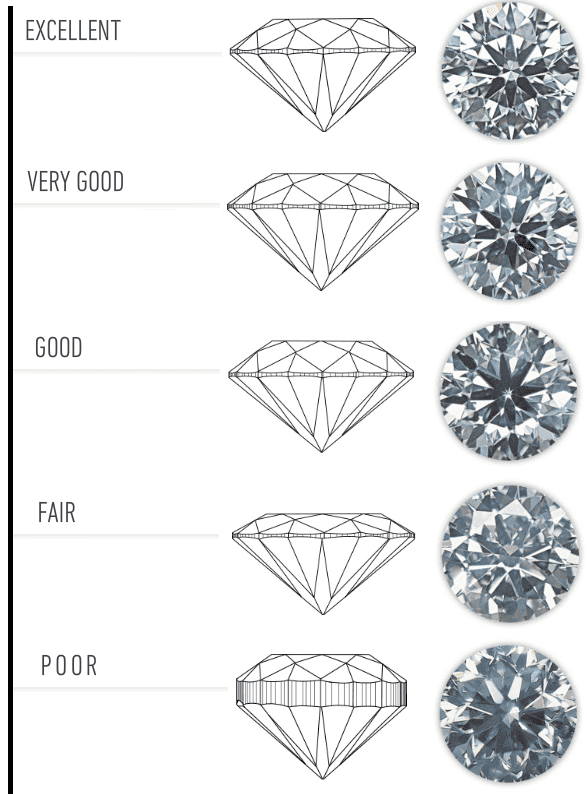
Diamond Colour
Many people confuse the colour grade of a diamond with the category of diamonds that are referred to as fancy coloured diamonds.
Fancy coloured diamonds are naturally coloured diamonds outside the normal color range. They are either yellow or brown diamonds that have more colour than a Z master stone or exhibit a colour other than yellow or brown. Only 1 out of every 10,000 diamonds possess natural colour and are graded on a separate colour scale.
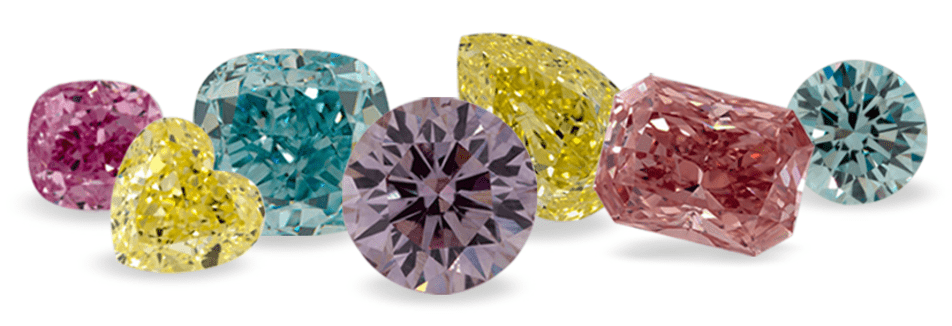
Conversely, a diamond’s colour typically refers to the GIA’s Color Grading Scale.
Under this scale, diamond colour actually measures the degree of a diamond’s lack of colour.
It does so by comparing the diamond under controlled lighting and precise viewing conditions. A trained gemmologist will compare the diamond against a master-stone whose colour grade is well-established and known.
Colour is more visible in large diamonds. This represents an opportunity to strike the right balance between colour and carat weight in optimising the value of your chosen diamond.
Some fancy-shaped diamonds hide colour better than others and can cost significantly less than a round-cut diamond.
Colourless
These are the highest-grade and rarest diamonds. For this reason, they are significantly more expensive than lower-grade coloured diamonds.
The differences between these grades are very small, and only identifiable by a trained expert.
For this reason, if going for a colourless diamond, it may be prudent to go for a ‘lower-grade’ colourless diamond (eg. ‘F’ instead of ‘D’) to save money. All colourless diamonds will still be considered a high-grade colour.
These diamonds look excellent when paired with white gold or platinum settings.
Near Colourless
These diamonds are less rare than their colourless siblings. Because of this, they are easier to source and are less expensive.
These diamonds have either a very slight warmth to their tone, a faint yellow hue, a slight yellow tint or a light yellow tone. All of these features are difficult to detect by the naked eye and can typically only be seen when compared side-by-side with diamonds of a higher colour grade.
Near colourless diamonds pair well with yellow gold ring settings.
Faint Colour
These diamonds are a good option as you consider diamonds of larger carat weights as they can provide great value.
Their faint colour is often hard to differentiate even when compared to lower-grade near colourless diamonds.
Very Light Colour
These diamonds have a slight color that can be seen by the naked eye.
They have a much lower price point than higher-grade diamond colours, and are usually deemed undesirable because of their inferior qualities.
Light Colour
Light colour graded diamonds have a warm tint that is visible to the naked eye.
They are generally deemed undesirable for making jewellery and are rarely used when making diamond engagement rings.
Copyright © 2022 Ringcommend. All Rights Reserved.








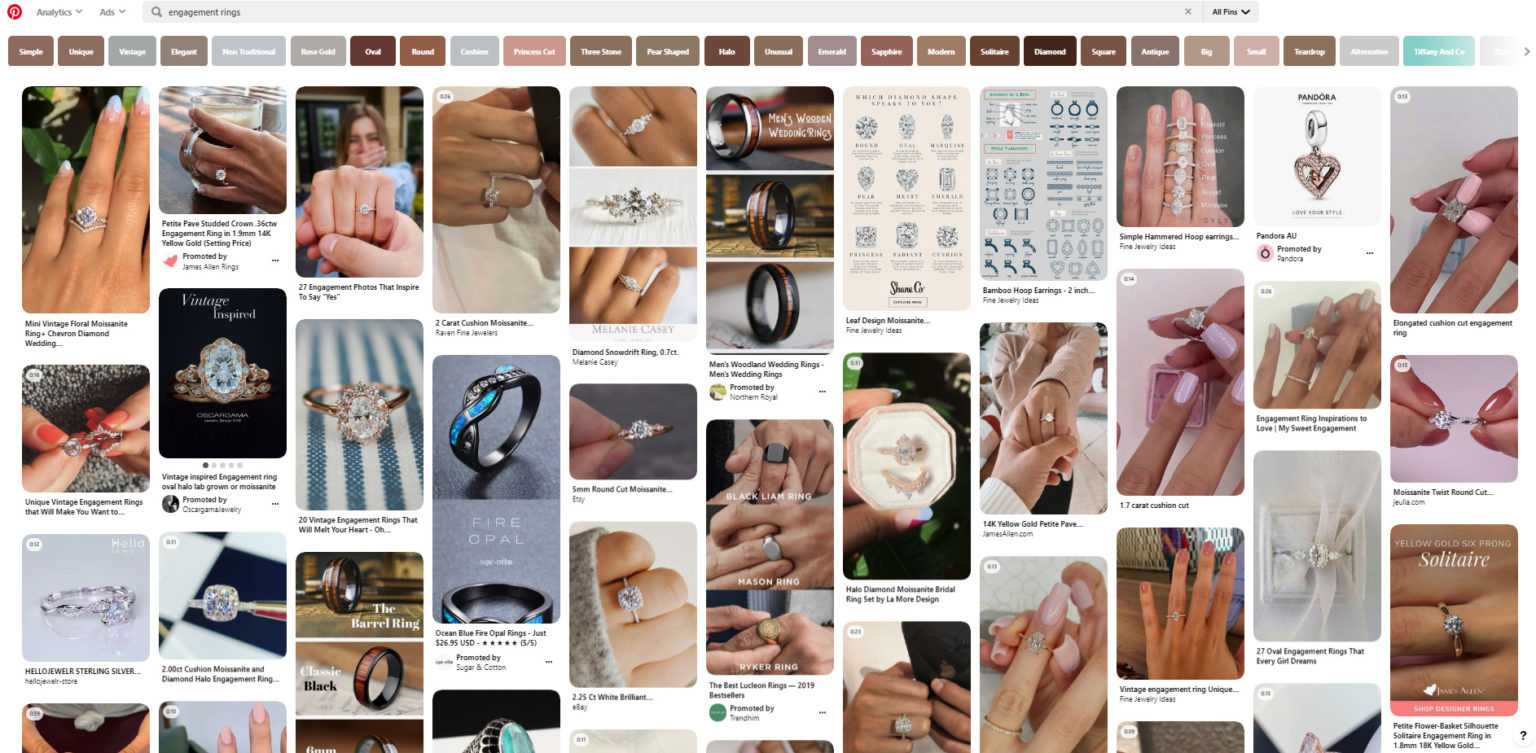

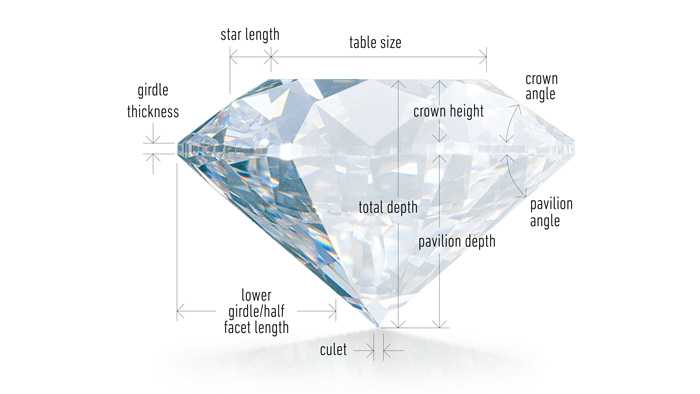
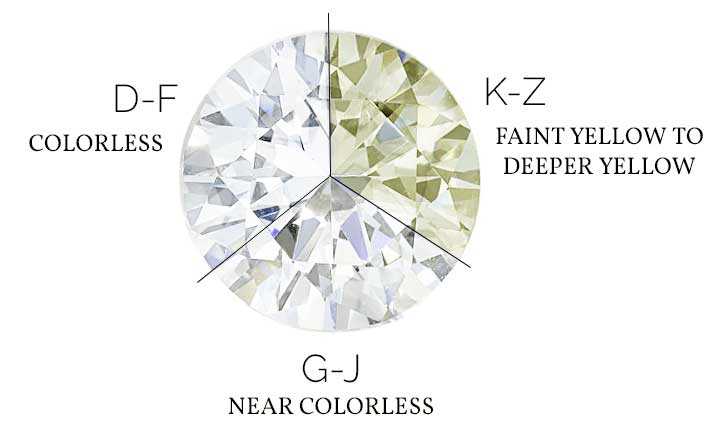





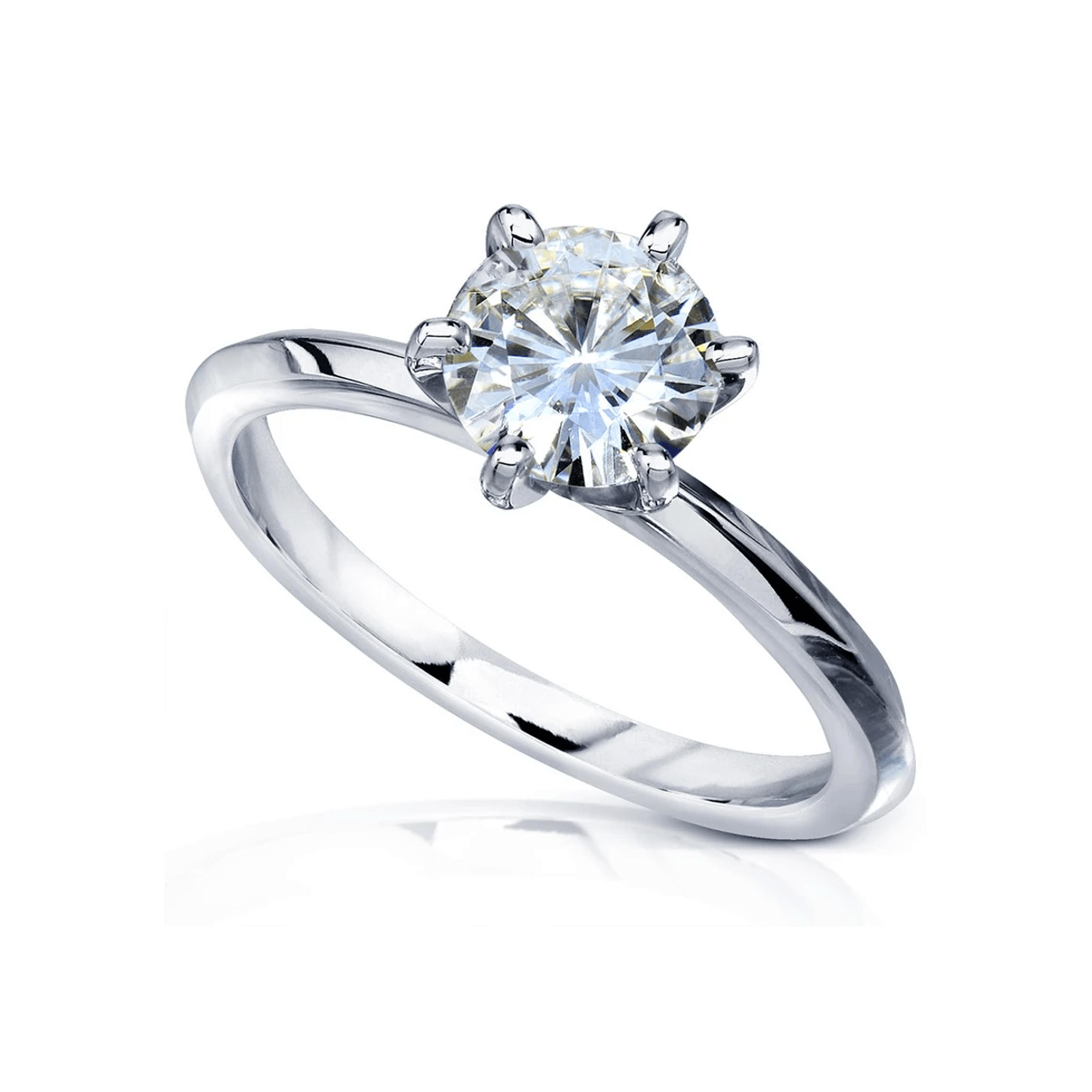
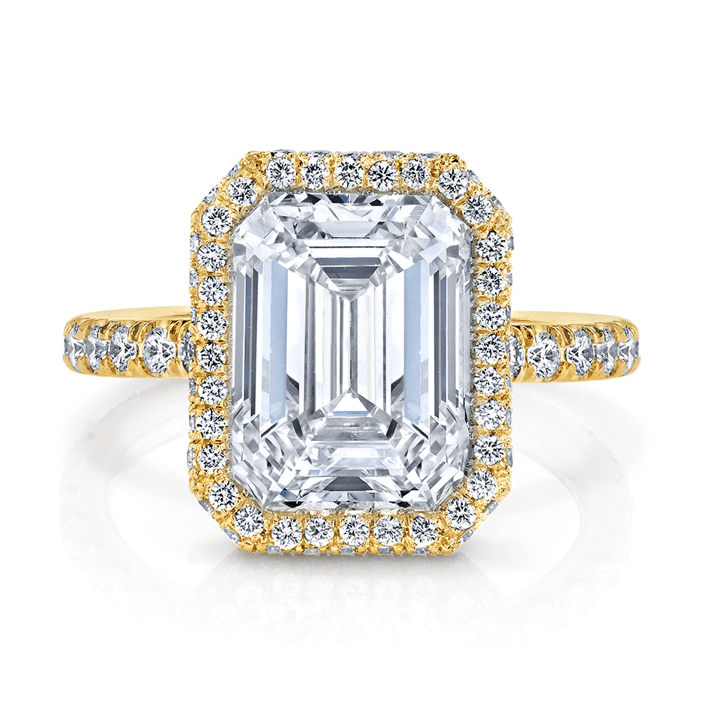
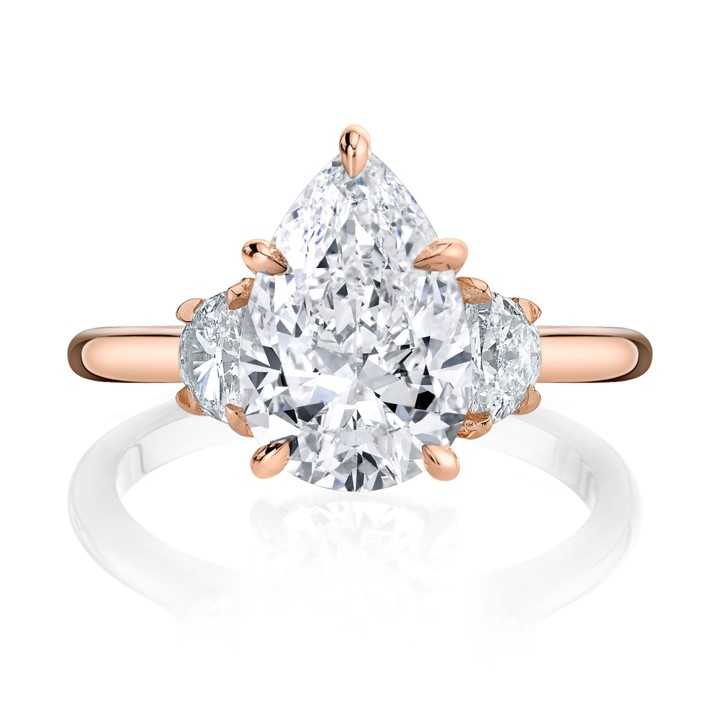

The Social Average Rule